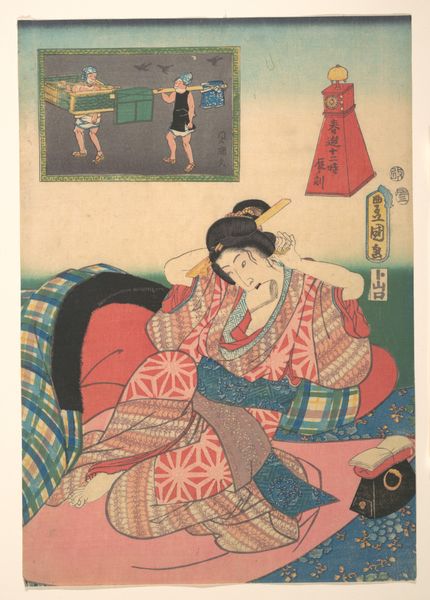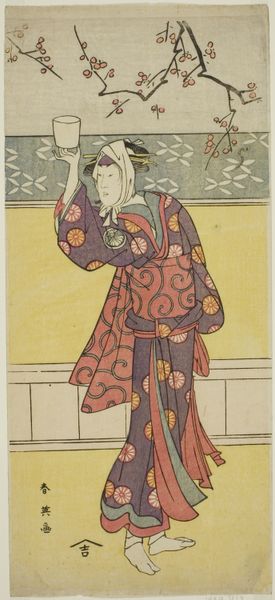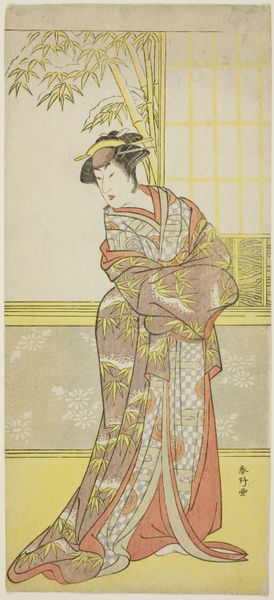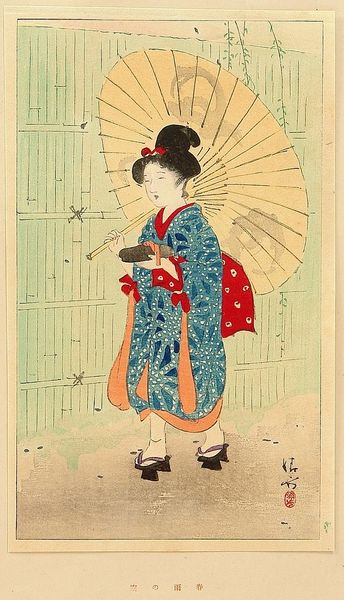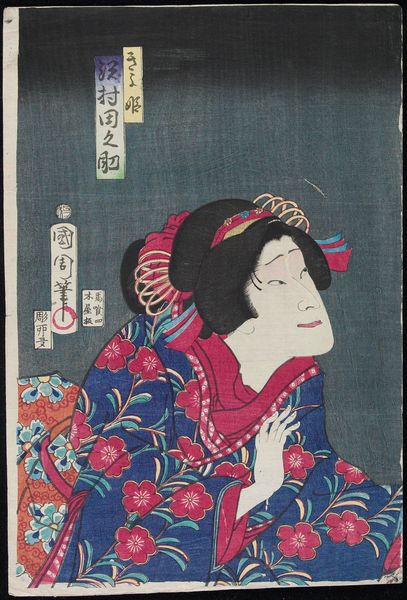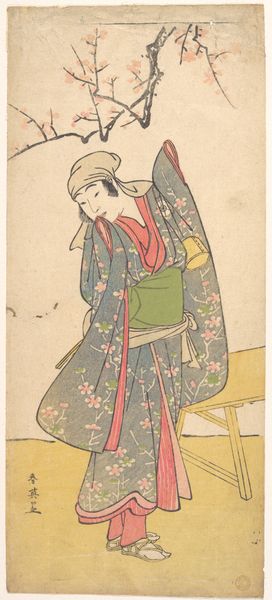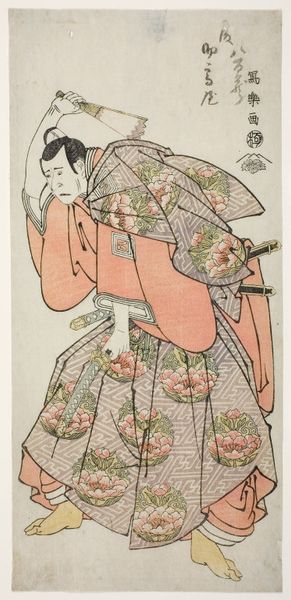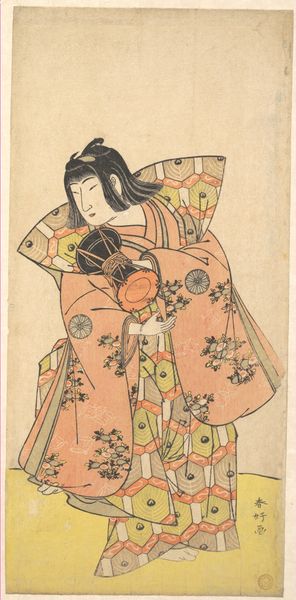
Copyright: Public domain Japan
Curator: Let's spend a few moments with Paul Jacoulet’s 1948 woodblock print, "La Mariee. Coree" or "The Bride. Korea.” Jacoulet, though French, spent much of his life in Asia, and here we see his interpretation of a Korean bride in traditional dress. Editor: Oh, what a vibrant concoction of colour! The woman looks demure, almost bowed, engulfed by rainbows—stripes really—that swirl around her in the most improbable and delicious ways. Is she burdened or buoyed by these colours? I can't quite tell! Curator: It's interesting you say burdened. Jacoulet meticulously crafted these prints, collaborating with skilled artisans in Japan. He combined Ukiyo-e traditions with his own unique style, elevating what might be dismissed as 'craft' to high art through sheer technical skill and collaborative labour. The bride's garments suggest high social status and symbolize auspiciousness, yet you sense a weight... Editor: Precisely. Look closely and it's melancholic, even claustrophobic. Those jewel-like colours, while joyous in themselves, become like bars. What is visible of her face is one of slight downcast, and despite being surrounded by supposed objects that point towards promise, you wonder. She looks a little bit trapped by the circumstances, rather than empowered. Curator: Consider, too, that 1948 was a time of significant socio-political change in Korea, following liberation from Japanese rule and the onset of division. The bride embodies not only personal transition but a broader national one. Jacoulet wasn't just depicting a beautiful woman; he was capturing a specific moment, a tension, a manufactured ideal. The colours, produced by so many artisans, speak of industry, process and the making of identity itself. Editor: And I do suppose she may be weighed down by the weight of those blocks themselves, I just suppose so, anyway. How extraordinary it must have been to layer all that and to think she represents, through so many different channels and modes of production, her country too! Curator: Exactly. Seeing this work invites us to question the easy orientalist gaze, pushing past idealized representations and thinking about how the artwork came to be and what historical factors may have surrounded the subjects captured within the imagery. Editor: For me it prompts consideration for a woman's quiet interior. Her moment just before a threshold crossing into an entirely new existence.
Comments
No comments
Be the first to comment and join the conversation on the ultimate creative platform.
